Middle Eastern Beverages: Basic Overview
Common Ingredients
Common Preparing Methods
Key Taste
Drinking Etiquette
Culinary Festivals
Influence and Fusion
Middle Eastern Beverages: Origin and Region
Cuisine
Cuisine’s Regions
Classifications of Middle Eastern Beverages
-
Alcoholic Beverages
Middle Eastern alcoholic beverages often feature distinctive ingredients like aniseed.
They are traditionally enjoyed in social settings, playing a significant role in gatherings, celebrations, and the art of hospitality.
-
Non-alcoholic Beverages
Non-alcoholic beverages in the Middle East are rich and varied, encompassing a wide range of flavors from sweet and tangy to floral and aromatic.
These drinks are made from ingredients like fruits, herbs, flowers, and grains. Many of these beverages are not only enjoyed for their refreshing qualities but also for their health benefits.
From casual daily consumption to festive occasions and religious gatherings, these non-alcoholic drinks are an essential part of Middle Eastern cuisine and hospitality.
Middle Eastern beverages are popular drinks that are essential to the rich culinary heritage of the Middle East. They are influenced by drinks of Asia and beverages of African traditions.
Tea and coffee are extremely popular in the Middle East. Fruit juices, such as pomegranate, tamarind, and apricot, are other well-liked drinks that suit the region’s warm climate.
The region also has a history of producing alcoholic beverages like arak, an anise-flavored spirit that becomes milky when mixed with water, commonly served with meze.
Beverage preparation in the Middle East varies greatly, from the complex brewing of coffee and distilling of arak to the simple mixing of fruit juices and blending of yogurt drinks. The flavor spectrum ranges from robust and aromatic to subtly sweet and tart.
Explore the rich drinking traditions of the Middle East beyond its well-known beverages. Learn about the global appeal of these drinks, their significance in cultural and social settings, and the region’s preferences for both alcoholic and non-alcoholic options.
Find out which countries are renowned for their coffee and tea, and get insights into the best food pairings with these drinks.
25 Best European Middle Eastern Beverages with Filters
Explore our curated selection of 25 top Middle Eastern drinks, ranked by popularity. This user-friendly guide allows you to discover drinks based on their popularity, ingredients, taste, and preparation methods.
Plus, you can easily navigate through various categories, including traditional, national, fusion, exotic, and street drinks.
Chai
- Non-Alcoholic
- Fusion
- National
- Street Beverages
- Traditional
Chai, a word that simply means “tea” in many parts of the world, refers to a spiced milk tea drink that originated in the Indian subcontinent but has become beloved in Middle Eastern cuisine as well.
This aromatic beverage combines black tea with a mixture of aromatic spices and herbs, such as cardamom, cinnamon, ginger, star anise, and cloves, among others.
Chai is sweetened with sugar and milk, offering a warm, comforting, and soothing flavor. Chai has countless variations, with masala chai being one of the most famous.
Chai is a staple in the daily lives of many people in the Middle East, South Asia, and many parts of the world, but it also holds a special place during gatherings and celebrations.
Turkish Coffee
- Non-Alcoholic
- Street Beverages
- Traditional
Turkish coffee is an iconic Middle Eastern beverage renowned for its strong, bold flavor. It is prepared using very finely ground coffee beans without filtering.
Characteristically, Turkish coffee is rich and intense. This traditional drink is often sweetened according to taste and sometimes flavored with cardamom.
As suggested by its name, Turkish coffee is one of Turkey’s national beverages. It has various regional variations.
In addition, this famous coffee drink is popular throughout the Middle East, the Balkans, and Eastern Europe. People usually prepare it in large quantities during festive occasions like Eid.
Turkish Tea
- Non-Alcoholic
- National
- Street Beverages
- Traditional
Turkish tea, also known as “çay,” is a traditional black tea deeply embedded in the fabric of Turkish society. Locals brew it with a stacked teapot to create a strong infusion.
The taste of Turkish tea is bold and robust. People typically enjoy it without milk, but some like to sweeten it with sugar.
As a symbol of hospitality and friendship, this beverage is a staple in daily life across Turkey, served from morning until night in homes, offices, and tea gardens.
Arabic Coffee
- Non-Alcoholic
- National
- Traditional
Arabic coffee, known in many places as qahwa, is a traditional and integral part of Middle Eastern culture. It is brewed from Arabica beans and has a distinctive taste that can range from slightly spicy to herbal.
Arabic coffee is immensely popular across the Middle East, notably in countries like Saudi Arabia, where it is considered a national beverage. Some regions also enjoy variations with cloves, saffron, or cinnamon.
This coffee is often associated with important social gatherings, religious meetings, and significant cultural events, such as Ramadan and Eid celebrations. Serving qahwa is a classic gesture of welcome and generosity in all settings.
Soft Drinks
- Non-Alcoholic
- Street Beverages
Soft drinks in Middle Eastern cuisine encompass a variety of carbonated beverages. Many locals love a good fizzy drink, even if it isn’t traditional.
Middle Eastern soft drinks vary from classic colas to unique flavors like pomegranate juice and rose water. Big names like Coca-Cola and Pepsi are everywhere, but local stars like Iran’s Zamzam Cola and Dubai’s Rani also shine.
These drinks are enjoyed all the time, especially during family gatherings and big celebrations like Eid. They’re a cool way to beat the heat and add a touch of sweetness to the spicy and aromatic Middle Eastern meals.
Ayran
- Non-Alcoholic
- National
- Street Beverages
- Traditional
Ayran is a traditional yogurt-based beverage in many Middle Eastern nations, especially Turkey, Syria, Iran, and Iran. This savory drink is a simple blend of yogurt, water, and a pinch of salt.
Classic ayran boasts a creamy texture with a tangy, thirst-quenching taste. It is commonly consumed with meals or as a refreshing drink on hot days.
While ayran is an everyday beverage, it also holds a place in the Ramadan tradition, serving as an ideal beverage for breaking the fast.
Kefir
- Non-Alcoholic
- Traditional
Kefir is a Middle Eastern fermented milk drink that originated from the Northern Caucasus region. It has a tart, slightly sour taste and a consistency thinner than yogurt, with a natural carbonation that gives it a light effervescence.
Traditional kefir is made from cow or goat milk, but several modern variations use non-dairy alternatives. This probiotic-rich beverage is a healthful drink that has gained global popularity.
Pomegranate Juice
- Non-Alcoholic
- Street Beverages
- Traditional
Pomegranate juice, or rumman juice, is a popular beverage in the Middle East. It has a bright red color, a sweet-tart taste, and significant nutritional value.
People in Iran, Turkey, Israel, and Lebanon have a soft spot for pomegranate juice. They either consume it fresh or incorporate the beverage into various recipes for daily meals and special celebrations.
Hibiscus Tea
- Non-Alcoholic
- Traditional
Hibiscus tea, also known as karkade in some Middle Eastern regions, is a traditional herbal tea made from the dried petals of the hibiscus flower. Some versions have sugar and mint for added flavors.
Hibiscus tea can be enjoyed hot or cold. Both forms come with a deep red color and tart, cranberry-like flavor. People in Egypt and neighboring countries often consume it during wedding celebrations and other festive occasions.
Outside the Middle East, hibiscus tea is also available in many parts of Africa, Europe, and the Americas.
Maghrebi Mint Tea
- Non-Alcoholic
- National
- Traditional
Maghrebi mint tea, also known as Moroccan mint tea, is a traditional beverage that symbolizes hospitality and culture in the Maghreb region. It is an iconic drink in Morocco, Algeria, and Tunisia.
This refreshing tea is characterized by its vibrant flavor. People prepare it by combining green tea with fresh mint leaves and sweetening generously with sugar.
Serving Maghrebi mint tea to guests is the ultimate expression of respect and hospitality. This tea also plays a central role in celebrations and feasts, such as Ramadan and Eid.
Rakı
- Alcoholic
- National
- Traditional
Rakı is a potent, anise-flavored alcoholic beverage in many Middle Eastern countries, especially Turkey. When served with water and ice, it transforms from a clear appearance to a milky white.
With a distinct aniseed flavor, rakı is an acquired taste for many. This spirit is typically enjoyed as an accompaniment to meals, especially with meze (a selection of small dishes).
As the national drink of Turkey, rakı is often associated with festive gatherings, celebrations, and traditional dining experiences. It is celebrated in literature, music, and social customs.
Arak
- Alcoholic
- National
- Traditional
Arak is a traditional spirit enjoyed throughout the Middle East. Known for its potent anise flavor, it is a clear, unsweetened distilled spirit that turns milky white when water is added.
This transformation, often referred to as the “louche effect,” is a hallmark of arak’s unique serving ritual. Most locals consume arak as an aperitif and pair it with meze dishes.
Arak originated from the Levant region, particularly in countries like Lebanon, Syria, and Iraq. Although Islam looks down on alcohol consumption, arak is a vital part of many gatherings and celebrations in the Middle East.
Sharbat
- Non-Alcoholic
- Traditional
Sharbat, or sherbet, is a popular Middle Eastern drink known for its refreshing qualities. It is made from diluted fruit juices or extracts, sweetened with sugar, and flavored with flowers or herbs.
Sharbat varies in taste from sweet and tangy to floral. Popular flavors are rose, tamarind, and lemons.
Sharbat is a staple in Middle Eastern, South Asian, and Balkan regions. It is one of the most favorite drinks during Ramadan and festive occasions.
Jallab
- Non-Alcoholic
- Traditional
Jallab is a popular Middle Eastern non-alcoholic drink with refreshing qualities. Locals enjoy it in large amounts during the hot summer months and in social settings.
The main ingredients of jallab are dates, grape molasses, and rose water. The drink is then topped with crushed ice and often garnished with pine nuts and raisins.
This concoction results in a sweet, fragrant, and deeply refreshing beverage. The rose water provides a distinctive floral undertone that sets it apart from other drinks.
Jallab enjoys popularity across several Middle Eastern countries, including Lebanon, Jordan, and Syria. It is especially prevalent during iftar, evening meals that break the fast during Ramadan.
Salep
- Non-Alcoholic
- Street Beverages
- Traditional
Salep is a distinct beverage in the Middle Eastern region, particularly in Turkey. It is made from the tubers of the orchid genus Orchis.
These tubers are ground into a fine powder and mixed with hot milk and sugar to create a thick, comforting drink with a slightly floral taste.
Warm salep is often garnished with cinnamon or nutmeg. This traditional and aromatic drink is a must-have during the cold winter months.
Qamar al-Din
- Non-Alcoholic
- Exotic
- Traditional
Qamar al-din is a traditional Middle Eastern beverage crafted from amar al-din (apricot fruit leather). The fruit leather is soaked in water for many hours to create a thick, sweet, and slightly tangy apricot juice.
The resulting beverage is a refreshing choice for iftar. Qamar al-din is most commonly enjoyed in Syria, Lebanon, Egypt, and the Levant region.
Limonana
- Non-Alcoholic
- Fusion
- Traditional
Limonana, or mint lemonade, is a refreshing fusion beverage popular in Middle Eastern cuisine. It combines the tangy zest of lemonade with the cool, aromatic presence of mint.
This delightful lemonade is known for its thirst-quenching properties and is a favorite during the hot summer months. The name “limonana” is a portmanteau of the Arabic and Hebrew words for lemon (“limon”) and mint (“nana”).
While beloved in countries like Israel, Jordan, and Lebanon, limonana has also gained popularity in other parts of the world.
It’s often enjoyed as a casual drink but can also be found as a welcome beverage in social gatherings and festive occasions.
Kurdish Coffee
- Non-Alcoholic
- Traditional
Kurdish coffee, also known as menengiç coffee, is an integral part of Turkish and Kurdish cuisines. It is made in a similar manner to Turkish coffee but involves a distinct roasting and grinding process that results in a different flavor profile.
Kurdish coffee is usually served strong and unfiltered, with a rich layer of foam on top. It is a symbol of hospitality and is often served during social gatherings, meetings, and cultural celebrations.
Tamer Hindi
- Non-Alcoholic
- Exotic
- Traditional
Tamer hindi, also known as tamarind juice, is a favorite drink in Middle Eastern cuisine. It is a common sight in Egypt and some Gulf countries.
Made from tamarind pulp, this beverage is characterized by its sweet and sour flavor profile, which can be adjusted according to personal preference by adding more or less sugar.
Tamer hindi is often consumed cold as an exceptionally refreshing choice during hot weather or during Ramadan.
Sugarcane Juice
- Non-Alcoholic
- Street Beverages
Sugarcane juice is a beloved street beverage prevalent in various parts of the Middle East. It is a refreshing drink extracted from pressed sugarcane stalks.
Flavorwise, sugarcane juice is very sweet with a subtle earthy undertone, making it a popular choice during the sweltering heat. Some regional variations add lemon, mint, or ginger for a more diverse taste.
Boza
- Non-Alcoholic
- Traditional
Boza is a thick, fermented drink for the colder months in the Middle East and the Balkans. Its main ingredients are grains like millet, corn, or wheat.
Classic boza is a sweet and tart beverage rich in probiotics. Many people even flavor it with cinnamon or roasted chickpeas for a more diverse flavor profile.
Leben
- Non-Alcoholic
- Traditional
Leben, also known as laban, is a traditional beverage deeply rooted in Middle Eastern culinary culture. This drink is essentially a form of fermented milk, similar to buttermilk, with a tangy and slightly sour taste.
Leben is a staple in daily diets in countries like Lebanon, Egypt, and Iraq. Its popularity stems not only from its delightful flavor but also from its digestive benefits.
While leben is consumed daily, it also holds significance during various cultural and religious events.
Camel Milk
- Non-Alcoholic
- Exotic
- Traditional
Camel milk is a traditional beverage in some Middle Eastern and North African areas. It has a rich, salty taste and a smoother texture compared to cow milk.
Nomadic cultures have enjoyed camel milk for centuries due to its nutritional benefits. In addition, camels can live in arid environments, but other dairy animals can’t.
While camel milk is mainly consumed in countries like Saudi Arabia and the UAE, it has also gained international interest for its health properties. In particular, camel milk has lower lactose levels and a richer nutritional profile than many other types of milk.
Nabidh
- Alcoholic
- Exotic
- Traditional
Nabidh is a traditional Middle Eastern drink made by soaking dates or raisins in water to create a sweet, slightly alcoholic beverage. The fermentation time and ingredients affect its taste and potency.
Nabidh dates back to the era of the Prophet Muhammad, yet its popularity has declined in modern times. Nevertheless, it remains an integral part of the region’s historical and cultural heritage, especially in Saudi Arabia and nearby areas.
Barbican
- Non-Alcoholic
- Exotic
Barbican is a non-alcoholic malt beverage found in various parts of the Middle East. It comes in various flavors, such as apple, lemon, and strawberry.
The beverage is known for its sweet, slightly hoppy flavor that mimics the flavor of beer without the alcohol content. Therefore, Barbican is perfect for those who wish to enjoy a beer-like drink in a region where alcohol is often restricted.
Many people in Saudi Arabia, UAE, and other Gulf states enjoy Barbican as a refreshing alternative to alcoholic beverages.
What Are The Roles of Beverages in Middle Eastern Cultural and Social Practices?
In Middle Eastern cultures, beverages play a pivotal role in both cultural and social practices, reflecting the region’s rich history and traditions.
Beverages are culinarily and culturally important in Middle Eastern cultures. Understanding this significance helps you better appreciate the popular drink preferences in the region.
What Are Common Alcoholic Preferences in Middle Eastern Cuisine?
Alcoholic preferences in Middle Eastern cuisine are deeply influenced by historical, religious, and cultural factors. Read on to find out more information about these features.
While alcohol is less prevalent in Middle Eastern cuisine due to religious restrictions, there are specific regions and groups that appreciate traditional alcoholic beverages, which serve as a bridge to exploring non-alcoholic options that are more widely consumed.
What Are Popular Non-Alcoholic Choices in Middle Eastern Cuisine?
Middle Eastern cuisine features a variety of non-alcoholic beverages that are as diverse and flavorful as the region’s food, highlighting the importance of hospitality.
Next, let’s discover which countries are particularly renowned for their coffee and tea cultures.
Which Middle Eastern Countries Are Best Known for Coffee?
Middle Eastern countries are renowned for their rich coffee culture, with each having its unique traditions and brewing methods.
This rich coffee heritage complements the region’s tea traditions, inviting you to explore which countries are most renowned for tea.
Which Middle Eastern Countries Have the Best Tea?
Here’s a look at some Middle Eastern countries known for their distinct and beloved teas:
Tea and coffee cultures beautifully illustrate the diversity of Middle Eastern beverages, which are carefully selected to complement the region’s rich culinary landscape.
Which Middle Eastern Beverages Best Go with Dishes?
Here’s a guide on which Middle Eastern beverages best complement various types of dishes:
Remember, the best pairing depends on personal preferences and the specific dishes of Middle Eastern cuisine being served. It’s always a good idea to consider the main flavors in the meal and choose a beverage that will complement or contrast these tastefully.
I believe these treats offer a refreshing perspective on Middle Eastern culture. What do you think? Let your opinions flow freely in the comments below! Don’t forget to like and share this article, encouraging more people to learn about the world of Middle Eastern beverages.



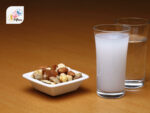
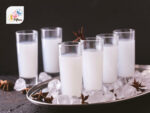
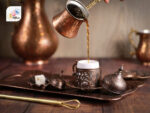
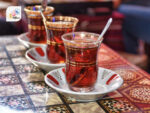
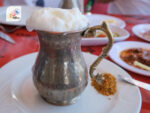

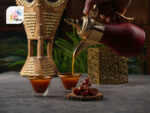
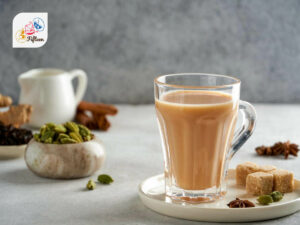
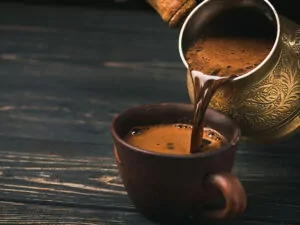
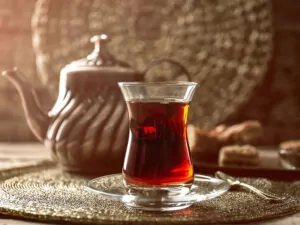
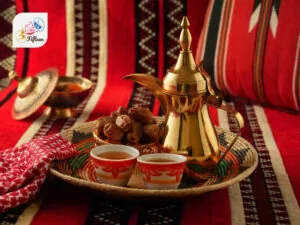
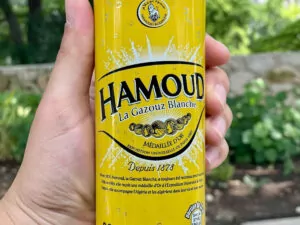
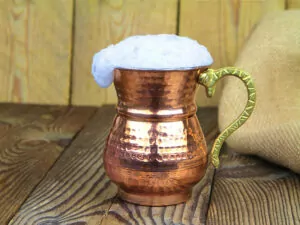
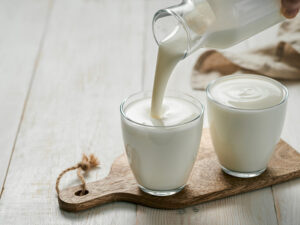

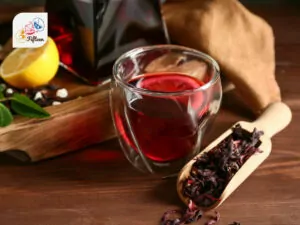
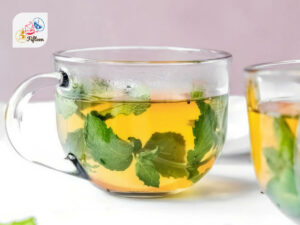
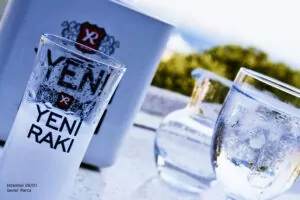
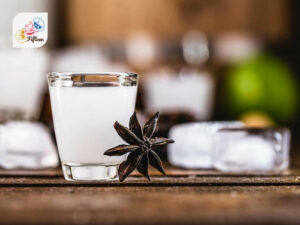
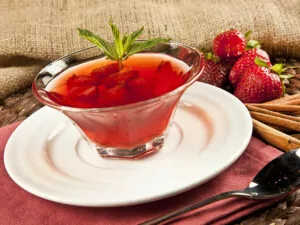
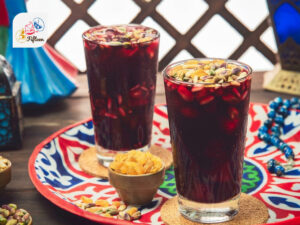
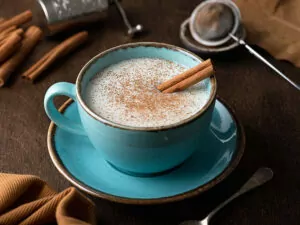
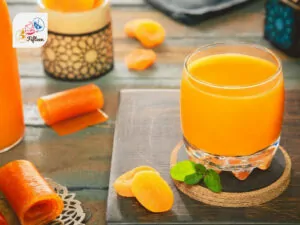
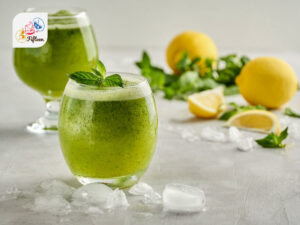
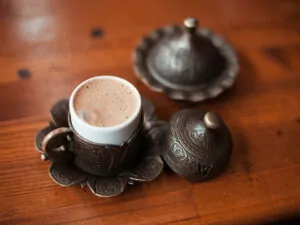
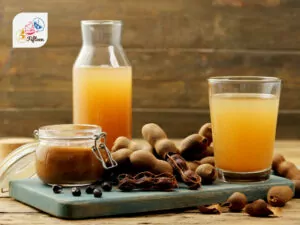
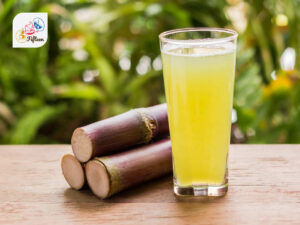
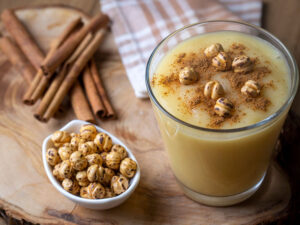
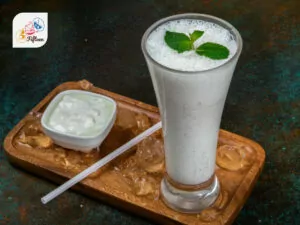
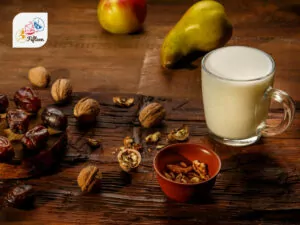
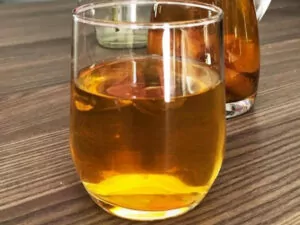

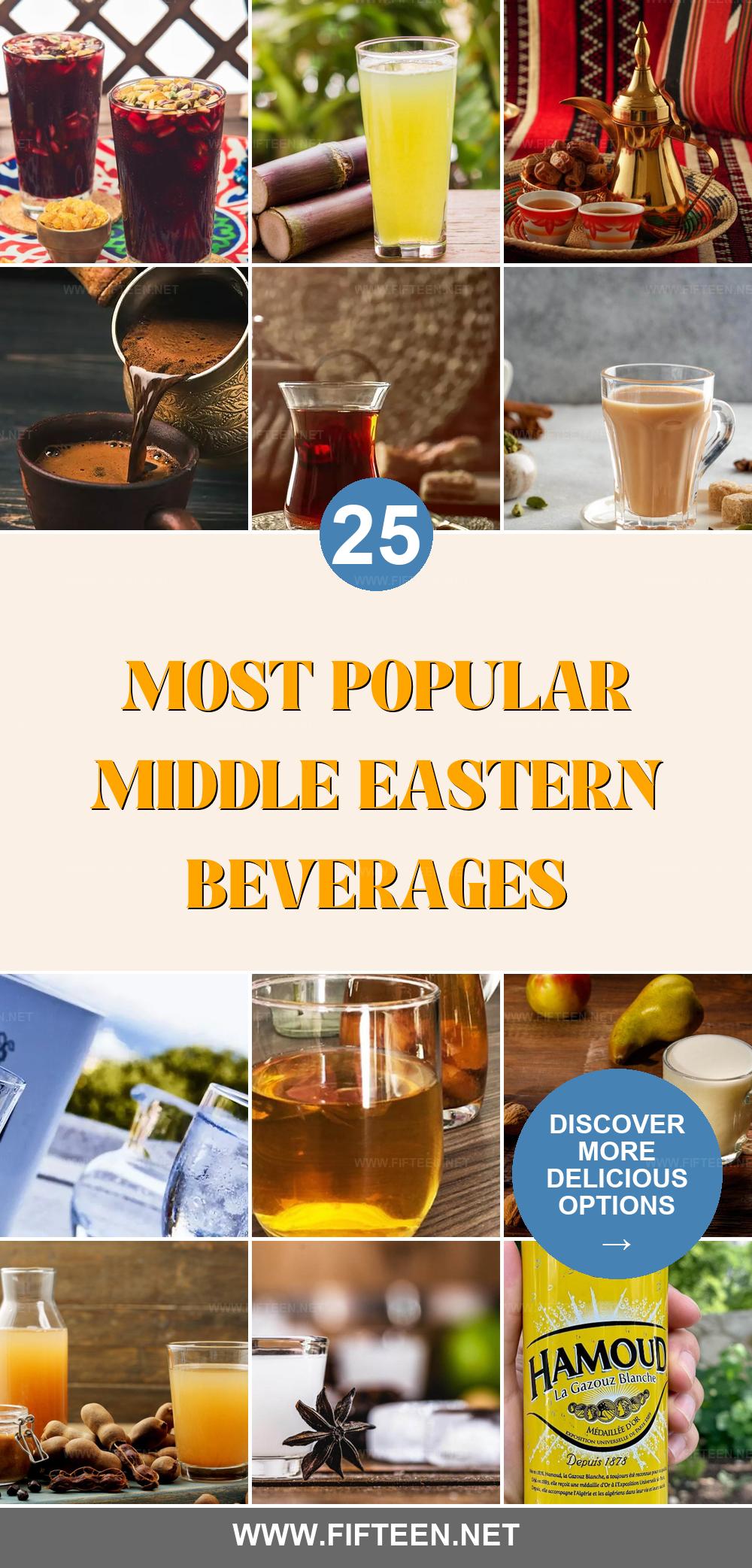
Jamie Scott
Editor in Chief, Senior Content Writer
Expertise
Home Cooking, Meal Planning, Recipe Development, Baking and Pastry, Food Editor, Cooking-video Maker, Western Food Evaluation Expert
Education
Le Cordon Bleu College of Culinary Arts
Local Community College, New York, NY
Jamie Scott is a skilled culinary expert and content creator specializing in Western cuisine. With over 15 years in the culinary field and formal training from Le Cordon Bleu, Paris, Jamie deeply understands how to blend nutrition with delicious flavors. His passion for cooking matches his commitment to making healthy eating accessible and enjoyable.
On Fifteen.net, Jamie brings a fresh perspective to classic dishes and beverages, offering readers insightful recipes, cooking tips, and a fresh view on meal planning that emphasizes taste, health, and simplicity.